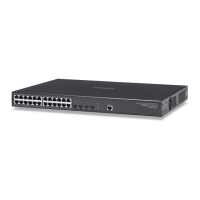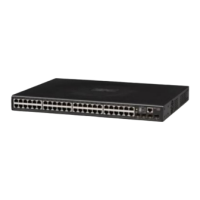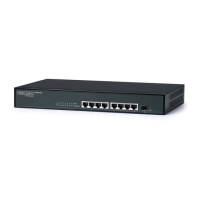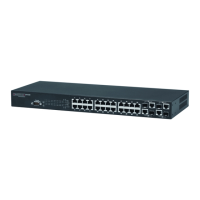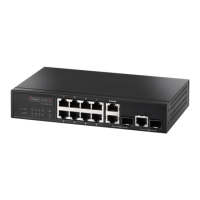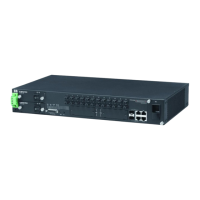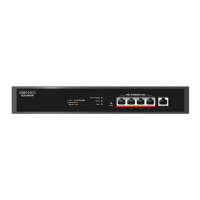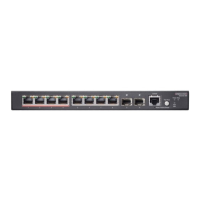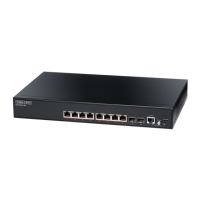C
HAPTER
26
| SNMP Commands
– 345 –
snmp trap security
name
This command displays or sets the SNMP trap security name.
SYNTAX
snmp trap security name [security-name]
security-name - Specifies the SNMP trap security name. SNMPv3
traps and informs use USM for authentication and privacy. A unique
security name is needed when SNMPv3 traps or informs are
enabled.
DEFAULT SETTING
None
COMMAND USAGE
Before entering a trap security name with this command, first enter an
SNMPv3 user with the snmp user add command (page 347).
EXAMPLE
SNMP>user add 800007e5017f000002 steve
SNMP>trap security name steve
SNMP>
snmp engine id This command displays or sets the SNMPv3 local engine ID.
SYNTAX
snmp engine id [engine-id]
engine-id - The SNMPv3 engine ID. (Range: 10-64 hex digits,
excluding a string of all 0’s or all F’s)
DEFAULT SETTING
800007e5017f000001
COMMAND USAGE
◆ An SNMPv3 engine is an independent SNMP agent that resides on the
switch. This engine protects against message replay, delay, and
redirection. The engine ID is also used in combination with user
passwords to generate the security keys for authenticating and
encrypting SNMPv3 packets.
◆ A local engine ID is automatically generated that is unique to the
switch. This is referred to as the default engine ID. If the local engine
ID is deleted or changed, all local SNMP users will be cleared. You will
need to reconfigure all existing users.
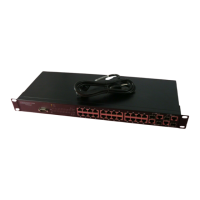
